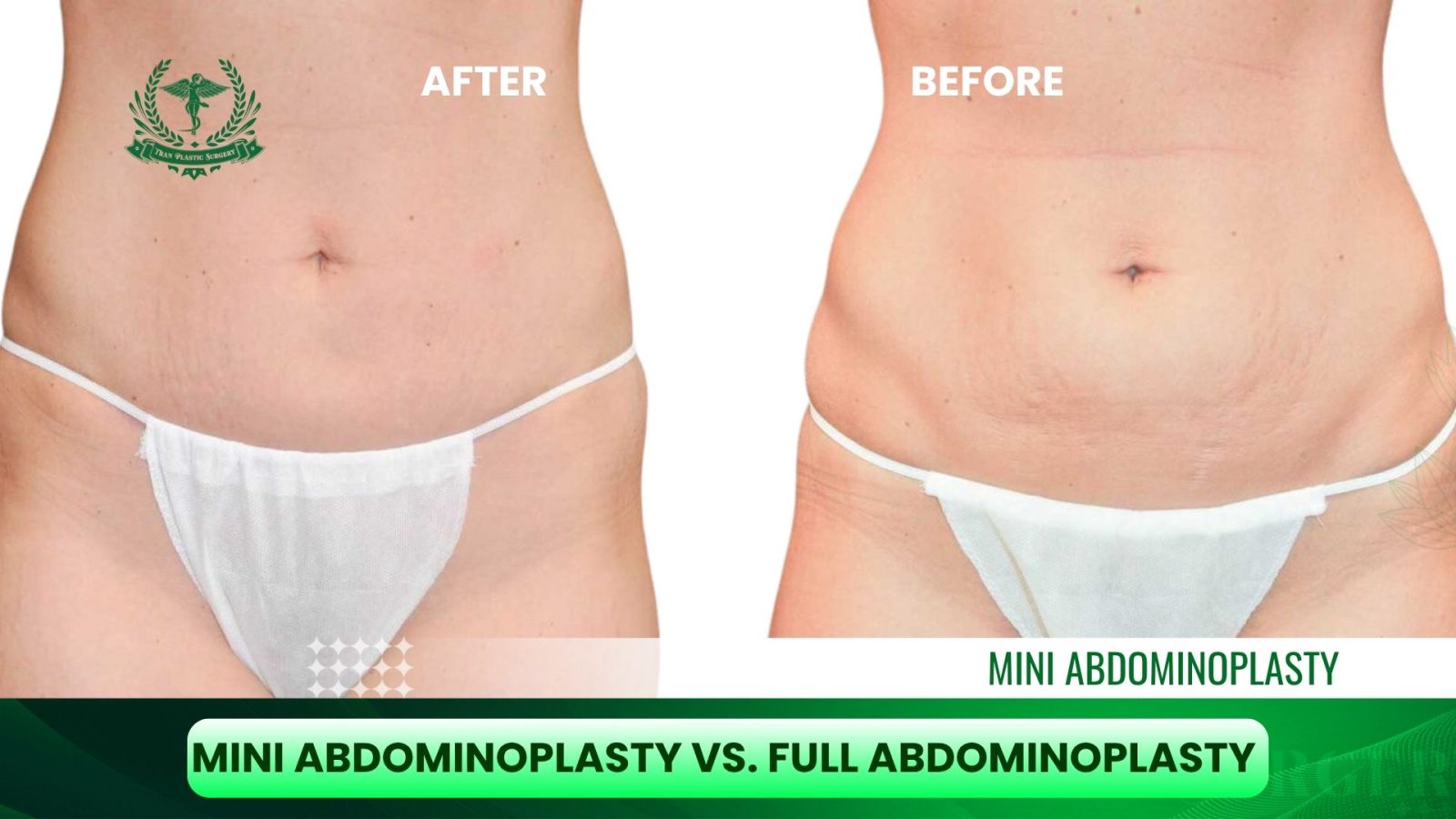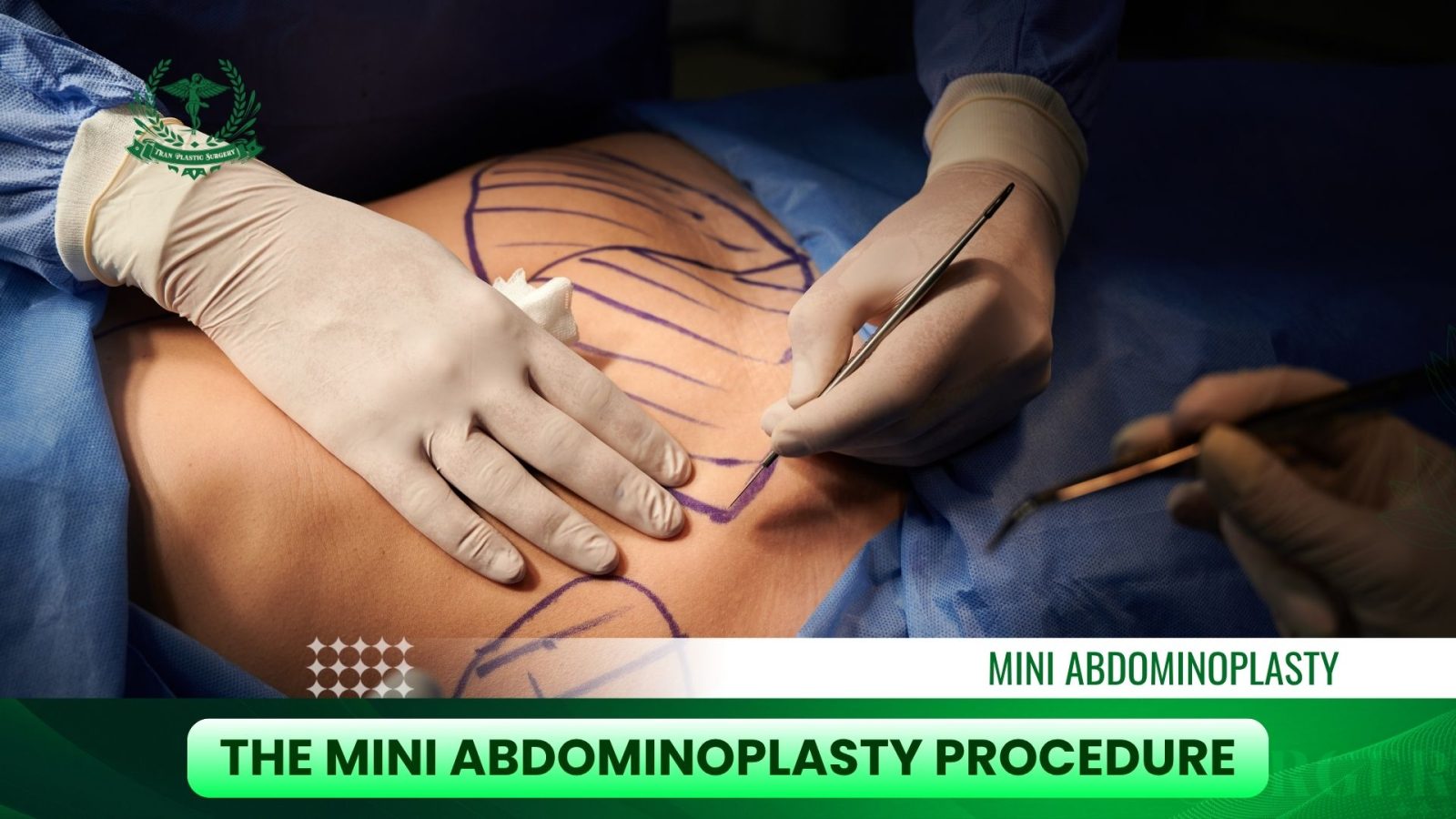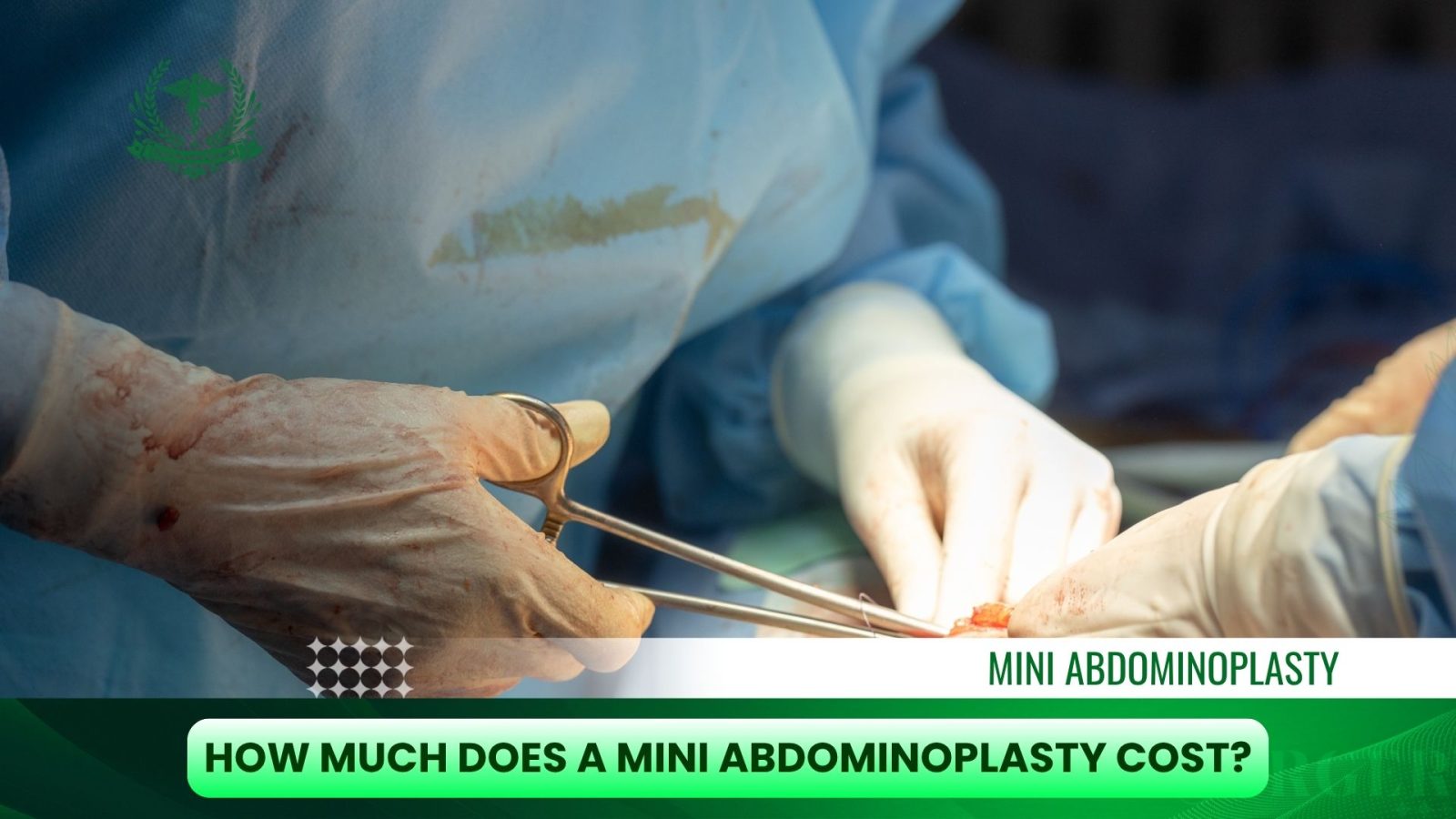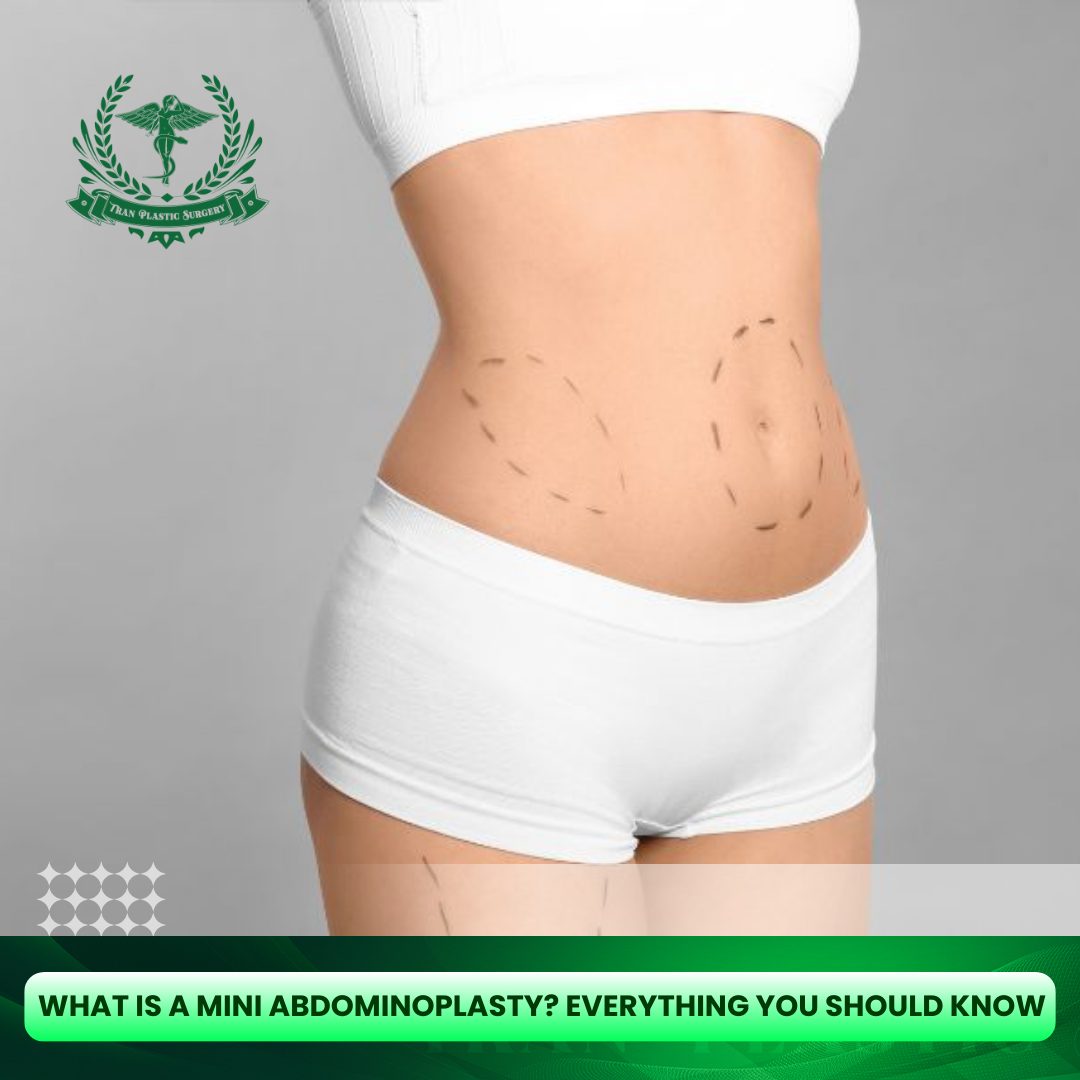Mini abdominoplasty, commonly known as a “mini tummy tuck,” is a popular cosmetic surgery designed to address specific aesthetic concerns in the lower abdomen. Unlike a traditional abdominoplasty, which is a more extensive procedure, a mini abdominoplasty is a less invasive option that focuses on the area below the navel. This procedure is ideal for individuals who are generally in good shape but struggle with a small amount of loose skin or a persistent “pooch” that doesn’t respond to diet and exercise.
If you’ve been considering cosmetic surgery to achieve a flatter, more contoured stomach, understanding the mini tummy tuck is the first step. This guide will provide a comprehensive look at the procedure, helping you determine if it’s the right choice for your body goals.
Table of Contents
ToggleWhat is a Mini Abdominoplasty?

A mini abdominoplasty is a surgical procedure that removes excess skin and fat from the lower abdomen. It involves a small, horizontal incision made just above the pubic hairline, which is typically shorter than the incision used in a full tummy tuck. Through this incision, a plastic surgeon can tighten the lower abdominal muscles and carefully trim away the excess skin, creating a smoother and flatter appearance.
This procedure is distinguished by its focused approach. It doesn’t involve repositioning the belly button and primarily targets issues in the area between the navel and the pubic region. This makes it a great solution for problems like a C-section scar or minor skin laxity after weight loss or pregnancy.
>>> Related post: Abdominoplasty (Tummy Tuck): Reveal a Firmer, Flatter You
Key Differences: Mini Abdominoplasty vs. Full Abdominoplasty

Choosing between a mini tummy tuck vs. full tummy tuck is a critical decision that depends on your specific needs. While both procedures aim to flatten the abdomen, their scope and results are very different. Here is a clear comparison to help you understand which might be a better fit for you:
FEATURE | MINI ABDOMINOPLASTY | FULL ABDOMINOPLASTY |
Incision Size | Small, horizontal incision (usually 4-8 inches) | Large, hip-to-hip incision |
Scar Location | Discreetly placed just above the pubic hairline | Extends across the lower abdomen, hip to hip |
Target Area | Primarily the lower abdomen (below the navel) | Entire abdomen (above and below the navel) |
Muscle Repair | Tightens muscles in the lower abdomen only | Tightens muscles across the entire abdomen |
Navel Repositioning | No, the belly button is not moved | Yes, the belly button is repositioned and sometimes reshaped |
Recovery Time | Shorter (typically 1-2 weeks) | Longer (typically 2-4 weeks) |
As you can see, the choice between these two procedures hinges on the extent of your concerns. If you only have loose skin and a muscle “pooch” below your belly button, a mini abdominoplasty could be all you need.
Schedule your confidential consultation with Dr. Tuan Tran at Tran Plastic Surgery today to discuss your goals and discover the best path to achieving a flatter, more confident you.
Am I a Good Candidate for a Mini Abdominoplasty?
Determining if a mini abdominoplasty is the right choice for you is a crucial first step. While the procedure offers a less invasive alternative to a full tummy tuck, it is not suitable for everyone. The best candidates for a mini tummy tuck share a few key characteristics.
1. The Ideal Mini Tummy Tuck Candidate
You may be an ideal candidate for a mini abdominoplasty if you meet the following criteria:
- You have minimal loose skin. Your primary concern should be a small amount of excess skin or fat localized in the lower abdomen, typically below the navel. This is often the result of minor weight fluctuations or a past pregnancy.
- Your core muscles are relatively strong. While the procedure can address minor muscle separation (diastasis recti) in the lower section, it is not designed to fix significant muscle laxity throughout the entire abdominal wall.
- You are at or near your ideal body weight. A mini abdominoplasty is a body contouring procedure, not a weight loss solution. Patients should be at a stable weight and maintain a healthy lifestyle.
- You have realistic expectations. The surgery aims to improve the appearance of the lower abdomen, not to create a completely flat, perfectly sculpted physique.
- You are in good overall health. As with any surgical procedure, candidates should be non-smokers and free of any medical conditions that could complicate surgery or recovery.
2. When to Consider a Full Tummy Tuck Instead
Understanding the limitations of a mini tummy tuck is just as important as knowing its benefits. You should likely consider a full abdominoplasty if your concerns are more extensive, such as:
- Significant muscle separation. If you have considerable diastasis recti, especially above the belly button, a full tummy tuck is required to repair the entire abdominal muscle wall.
- Extensive loose skin. If you have excess skin that hangs both above and below the navel, a mini procedure will not be sufficient to achieve your desired results.
- Excessive skin laxity following major weight loss. Patients who have lost a significant amount of weight often have a great deal of loose skin and would benefit more from a full or extended tummy tuck.
A consultation with a board-certified plastic surgeon is the best way to determine which procedure is right for your unique anatomy and aesthetic goals.
The Mini Abdominoplasty Procedure: What to Expect
Understanding the surgical process can help alleviate any anxieties you may have and prepare you for your mini abdominoplasty. While the procedure is less complex than a full tummy tuck, it still involves a precise, multi-step process performed by a qualified plastic surgeon.

1. Step-by-Step Breakdown of the Mini Tummy Tuck
The mini abdominoplasty procedure is typically performed on an outpatient basis and generally takes about one to two hours, depending on the complexity of the case and whether other procedures are being performed simultaneously.
#1 Anesthesia
You will be given either general anesthesia or a local anesthetic combined with a sedative. Your surgeon and anesthesiologist will discuss the best option for your comfort and safety.
#2 Incision
The surgeon will make a single, short horizontal incision low on your abdomen, just above the pubic hairline. This incision is strategically placed to be easily concealed by underwear or a bikini bottom, ensuring that the mini abdominoplasty scar is as discreet as possible.
#3 Muscle and Skin Correction
Through this incision, the surgeon will lift the skin and fat away from the underlying muscle. Any minor muscle separation in the lower abdomen can be addressed at this stage by tightening the muscles with sutures. The surgeon will then pull the skin downwards, trim away the excess, and re-drape the remaining skin for a smoother, tighter appearance.
#4 Closing
The incision is carefully closed with sutures, and a dressing is applied. You may also have a temporary drain placed to help remove any excess fluid.
A key point to remember about the mini abdominoplasty procedure is that, unlike a full tummy tuck, your belly button is not moved or repositioned, as the surgery’s focus is limited to the area below it.
Ready to take the next step? Discover how our specialized Tummy Tuck Service at Tran Plastic Surgery can help you achieve a flatter, more contoured abdomen with expert care and personalized treatment.
2. The Role of Liposuction
For many patients, a mini abdominoplasty with liposuction is the ideal combination. While the mini tummy tuck removes excess skin and tightens muscles, it does not remove stubborn pockets of fat from the surrounding areas. By integrating liposuction, the surgeon can sculpt the flanks, hips, and upper abdomen, creating a more comprehensive and harmonious contour to your midsection. This combined approach often leads to more dramatic and satisfying “before and after” results.
Mini Abdominoplasty Recovery & Aftercare
One of the most significant advantages of a mini abdominoplasty is its shorter and more manageable recovery period compared to a full tummy tuck. While the healing process varies for each individual, there is a general timeline and a set of aftercare instructions that all patients should follow for the best possible results.

1. Recovery Timeline (Recovery from mini abdominoplasty)
A typical mini abdominoplasty recovery time is much quicker, often allowing patients to return to most normal activities within a couple of weeks. Here’s a general timeline of what you can expect:
- First Few Days (Week 1): This is when you’ll experience the most discomfort, swelling, and bruising. You will need to take prescribed pain medication to manage this. You will be advised to walk with a slight hunch to avoid putting tension on the incision.
- 1-2 Weeks Post-Surgery: Pain and swelling will begin to subside significantly. Many patients feel comfortable enough to return to work (depending on their job) and resume light, daily activities. Gentle walking is encouraged to promote blood circulation and healing, but strenuous exercise should be avoided.
- 4-6 Weeks Post-Surgery: By this point, most of the swelling has gone down, and you will be feeling much better. You can typically resume a full exercise routine, including more vigorous activities, but always with your surgeon’s approval.
- 3-6 Months: The final results of your mini tummy tuck will become more visible as residual swelling fully disappears. The scar will begin to fade, becoming less noticeable over time.
2. Managing Your Recovery
To ensure a smooth and successful recovery, it is essential to follow your surgeon’s post-operative instructions carefully. Key aspects of aftercare include:
- Compression Garment: You will be fitted with a special compression garment immediately after the surgery. This is a critical part of the recovery from mini abdominoplasty, as it helps to reduce swelling, minimize bruising, and provide support to the healing tissues. You will be instructed to wear it consistently for a period of several weeks.
- Pain Management: Your doctor will prescribe medication to help manage any pain or discomfort in the first few days. As the pain subsides, over-the-counter pain relievers may be sufficient.
- Rest and Activity: Get plenty of rest, but also remember that light activity is important. Short, gentle walks help prevent complications like blood clots. Avoid any heavy lifting or strenuous activities until you are cleared by your surgeon.
- Incision Care: Follow your surgeon’s instructions for keeping the incision clean and dry. Proper care is essential to prevent infection and promote healing of the mini abdominoplasty scar.
3. Potential Scars (Mini abdominoplasty scar)
A mini abdominoplasty results in a scar, but it is typically shorter and far more discreet than that of a full tummy tuck. The incision is strategically placed low on the abdomen, just above the pubic area, making it easy to conceal with underwear or a bikini. Scar maturation is a gradual process that can take up to a year or more. With proper care, including sun protection and using scar creams or silicone sheets as recommended by your surgeon, the scar will fade to a thin, fine line over time.
Mini Abdominoplasty Before and After
The best way to visualize the potential results of a mini abdominoplasty is to view mini abdominoplasty photos. These images offer a powerful look at the transformations possible with the procedure, showcasing how a surgeon can remove a small amount of excess skin and tighten the lower abdomen to create a flatter, more contoured appearance. While individual results vary, these photos provide a realistic glimpse into what you can expect from a mini tummy tuck.

How Much Does a Mini Abdominoplasty Cost?
According to information compiled from multiple sources, a mini tummy tuck typically costs between $3,500 and $16,000 in the United States. The final price is not a set number and can vary significantly based on several key factors, including:
- Surgery Fee: This fee reflects the surgeon’s experience, expertise, and the complexity of your specific procedure. Experienced surgeons in major metropolitan areas may charge higher fees.
- Anesthesia: The anesthesiologist’s fees and the type of anesthesia used, whether general or local, will be factored into the total cost.
- Facility Fee: The location where the surgery is performed (e.g., an accredited hospital or surgical center) will have its own fees.
- Geographic Location: The cost of cosmetic procedures can vary significantly between cities and states.
- Additional Procedures: If a procedure such as liposuction is performed in conjunction with a mini tummy tuck, the cost will increase.
Because of these variables, it is important to consult with a qualified plastic surgeon to get an estimate tailored to your individual needs. Contact Tran Plastic Surgery today for a free consultation.

Schedule a Consultation
You now have a comprehensive understanding of the mini abdominoplasty, from what the procedure entails to what you can expect during recovery and its associated costs. The next and most important step is to schedule a consultation with a board-certified plastic surgeon. A professional assessment is essential to determine if you are an ideal candidate and to create a treatment plan tailored to your specific body and aesthetic goals. Contact a qualified specialist today to take the next step toward a smoother, more confident you.
Your journey to confidence starts here, reach out to Tran Plastic Surgery and schedule your personalized consultation now.
Frequently Asked Questions (FAQs)
To help you make a fully informed decision, we’ve compiled a list of common questions about the mini tummy tuck.
1. Will a mini tummy tuck fix my C-section scar?
Yes, in many cases. A mini abdominoplasty is often an excellent way to address a C-section scar and the “pooch” of skin that can form above it. The incision for the mini tummy tuck is typically made in the same area as the C-section scar, allowing the surgeon to remove the old scar along with the excess skin, leaving you with a flatter abdomen and a single, more refined scar that is easier to conceal.
2. Does a mini abdominoplasty get rid of stretch marks?
The procedure will only remove stretch marks that are located on the skin that is excised (removed). Since the mini tummy tuck focuses on the lower abdomen, it can effectively eliminate stretch marks in the area below the navel. Stretch marks located on the upper abdomen will not be removed, though they may be repositioned lower on the stomach as the skin is tightened.
3. How long do the results of a mini abdominoplasty last?
The results of a mini abdominoplasty are considered permanent, provided you maintain a stable weight and a healthy lifestyle. The fat and skin cells removed during the surgery are gone for good. However, significant weight gain or future pregnancies can stretch the skin and muscles, which may compromise your results.
4. Is a mini abdominoplasty a painful procedure?
Discomfort is normal after any surgery, but the pain from a mini abdominoplasty is generally well-managed with prescribed medication. Most patients describe the feeling as a tightness or soreness, similar to an intense workout. The discomfort is typically less severe than that of a full tummy tuck due to the smaller incision and less extensive muscle repair.





